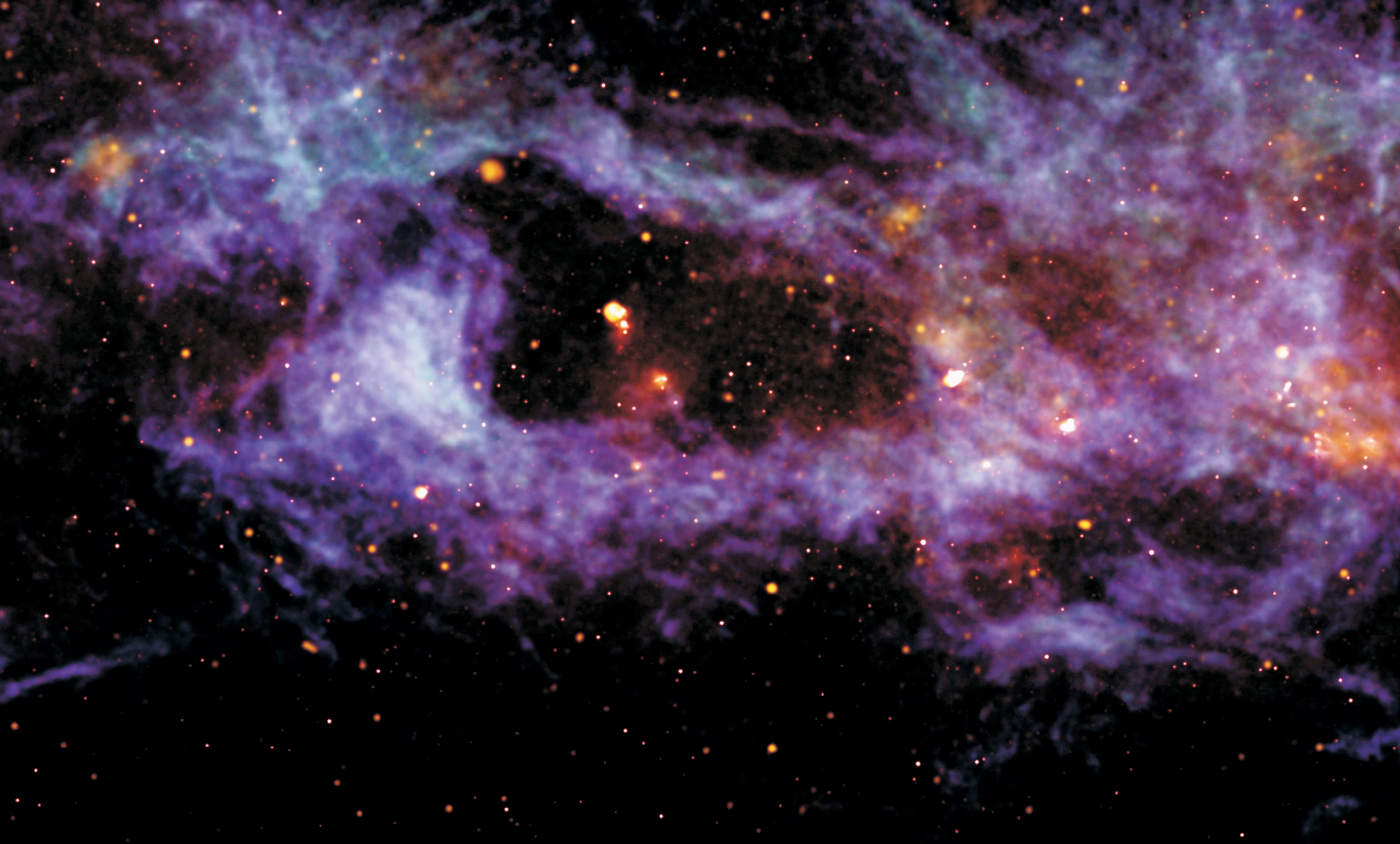Were the First Dust Particles Produced in the Big Bang?

Question:
As I read it, DUST is necessary for stars to form from gaseous clouds. Hydrogen disperses in a vacuum, so hydrogen wouldn’t clump together in space on its own.
Also as I read it, only hydrogen and perhaps also helium originated in the Big Bang or what was produced in it when it cooled enough to form atoms. But there was no dust in the Big Bang (also as I read about it). Dust is something solid in ordinary terms I suppose. Thus it would be composed of elements that are not normally gaseous, perhaps carbon and slightly heavier elements.
We understand that stars PRODUCED elements heavier than helium.
So if there was NO dust formed in the big bang, where did the dust come from that formed the first stars? As I see it, either there WAS dust produced by the Big Bang or the dust that created the first stars came from another (unknown?) source. But where could that have been.
Do you see the logical dilemma I am posing?
Answer:
Dust in space is formed in the atmospheres of certain types of stars. Our understanding of the formation of the first stars is that they formed from the gravitational collapse of hydrogen gas clouds. Those first stars then produced heavy elements, which formed the seeds for the first dust particles in the universe, which was incorporated into future generations of stars. Dust production in the Big Bang does not appear to be necessary for the formation of the first stars.





